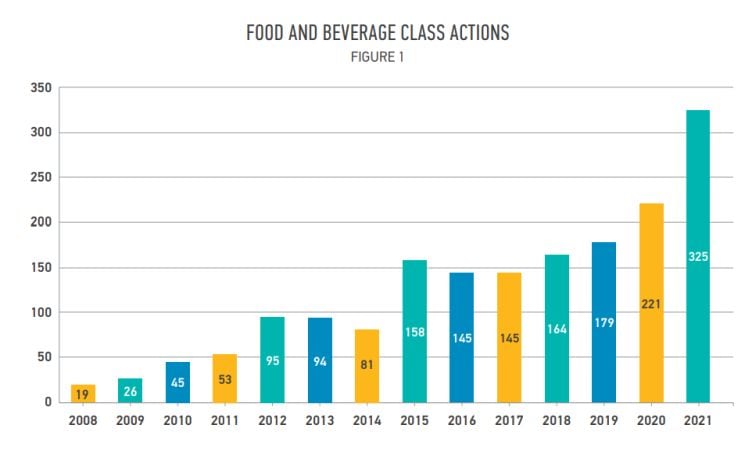The FDA – which has been under intense pressure to act following the publication of a 2021 Congressional Subcommittee report alleging “dangerous” levels of neurotoxic heavy metals in leading baby food brands - has thus far published an action level for inorganic arsenic in infant rice cereal (August 2020), and draft guidance on action levels on lead in juice (April 2022).
Draft guidance on action levels for inorganic arsenic in apple juice, and lead in food intended for babies and young children, will be published by the end of 2022, with guidance on mercury and cadmium to follow in 2023 and 2024 under the agency’s ‘Closer to Zero’ action plan.
FDA to AG James: ‘There are statistical issues with your proposed methodology’
Frustrated by this glacial pace, New York Attorney General Letitia James filed a petition in October 2021 (signed by several other state AGs) calling on the FDA to expedite the process by issuing thresholds based on levels achieved by the ‘best performers’ in the category.
In a letter denying the petition, however, the FDA challenged James’ proposed methodology.
Under the federal Food, Drug, and Cosmetic Act, argued the FDA, you can’t characterize a food as adulterated (and potentially injurious to health) simply because it contains a level of a particular toxic element “above the amount present in what you refer to as the ‘best performer’ in that food category.
“In addition, there are statistical issues with your proposed methodology that render your approach unsuitable for setting and applying action levels.”
It added: “Your proposed methodology is not tethered to the adulteration standard in section 402(a)(1) of the FD&C Act (21 U.S.C. 342(a)(1)) or to FDA’s regulation on action levels (21 CFR Part 109).”
It also noted that the “availability of data and additional research needs for arsenic, lead, cadmium, and mercury are different,” which meant that it would take longer to set appropriate thresholds for some heavy metals versus others.
AG James: Take another look at our petition
In a June 1 petition asking the FDA to reconsider its stance, AG James hit back, arguing that FDA regulations governing action levels “do not prescribe any particular methodology” that it is required to follow.
As for the adulteration standard referenced by the FDA in its letter, added James, “FDA issued an action level of 100 ppb for inorganic arsenic in infant rice cereal to ‘reduce the possible risks of neurodevelopmental and other health effects’ without reference to ‘adulteration’ as a basis for establishing the specific level of 100 ppb.”
She also noted that, FDA “took industry achievability into account in setting the action level for inorganic arsenic in infant rice cereal,” and argued that there was therefore no reason why as an interim measure, it should not take the levels achieved by the category’s best performers as a benchmark.
In a June 23 letter to the FDA and the USDA, from the office of AG James in New York, but signed by attorneys general from 21 other states, she wrote: “Without your bold and timely leadership to accelerate protective actions by your agencies, American families with young children will be asked to accept this ‘unacceptable’ status quo for several more years.
“US baby food manufacturers continue to largely self-regulate the amount of lead (and other toxic elements) that is contained within their products. Indeed, it remains up to the manufacturers to decide whether even to test their products for these contaminants.”
Issuing immediate guidance to baby food manufacturers would be “the most expedient way for the federal government to reduce toxic heavy metal contamination in the foods eaten by today’s babies and young children,” she added.

USA Rice Federation: ‘Irresponsible reporting leads people to think this is simply a rice problem’
Speaking at a recent public meeting held as the FDA issued action levels for lead in fruit juice, Betsy Ward, president and CEO of the USA Rice Federation, said last year’s Congressional report had left parents with the impression that the cause of the heavy metals problem was processed baby food from large food companies (when in fact this is an industry-wide issue), and that the solution is buying organic (not the case), or making their own baby food from fresh produce (which also contains heavy metals).
And given that the only FDA action level for infant food right now focuses on inorganic arsenic in baby rice cereal (100ppb), she said, rice foods were getting the brunt of the negative press, although, she claimed, the “levels of inorganic arsenic in rice grown in the United States are the lowest in the world, according to the UN and the WHO."
She added: “Irresponsible reporting leads people to think this is simply a rice problem… We don't know how other ingredients may contribute to end product heavy metal levels since at present they are not regulated.
“This can result in hesitancy or refusal of some manufacturers to use rice as an ingredient.”
'False equivalencies'
Ward also expressed frustration over “false equivalencies” whereby very low action levels set for other food & beverage categories are used by health advocates as reference points for action levels for baby foods, when toxicologists will tell you that thresholds for drinking water, for example, are not immediately relevant to thresholds for other food categories because absorption rates might vary, or consumption patterns are different.
All that said, the USA Rice Federation is working hard to get to the source of the problem with heavy metals, said Ward.
“Whether mitigation comes from new rice types, new growing techniques, or some other advancement, the US industry is ready to adopt scientifically proven approaches. It involves soil chemistry, soil microbes, cultural management and other factors.
Alternate wetting and drying irrigation techniques for rice
Gerber, meanwhile, is working with suppliers to address the issue of heavy metals at the source, with one approach being to grow row rice using alternate wetting and drying irrigation techniques which reduce plant uptake and subsequent accumulation of arsenic.
“We believe that the use of these techniques will enable even lower levels of inorganic arsenic while providing other benefits to both the grower and the environment,” said Cheryl Callen, senior director of regulatory affairs.
As for root vegetables, said Callen, “Based on an extensive testing program we conducted in 2020, Gerber updated our 2021 soil testing program to include lower lead and cadmium limits for soil than we had before and to add soil pH as an acceptance criteria, as our data would indicate that this is a parameter that has the potential to impact heavy metal uptake.
“And starting this year, we are also initiating the use of some new technology to improve soil sample accuracy using GPS guided auto sampling of carrot fields in Michigan. We find that the more sampling we have, the finer the grid, the more information we'll be able to have on the field levels.”
She added: “In the areas of mitigation, we evaluate cultivars for heavy metal uptake and accumulation, and are looking for new ways to bind lead and cadmium in soils to minimize uptake.”




